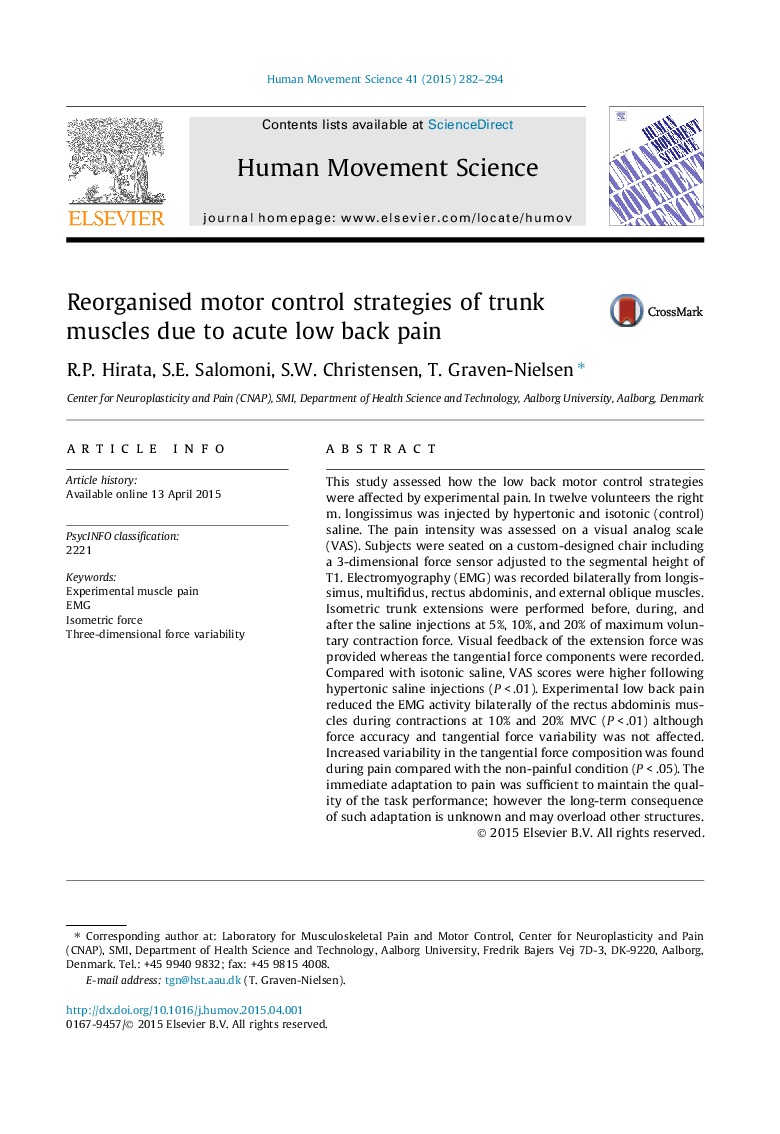| Article ID | Journal | Published Year | Pages | File Type |
|---|---|---|---|---|
| 7292065 | Human Movement Science | 2015 | 13 Pages |
Abstract
This study assessed how the low back motor control strategies were affected by experimental pain. In twelve volunteers the right m. longissimus was injected by hypertonic and isotonic (control) saline. The pain intensity was assessed on a visual analog scale (VAS). Subjects were seated on a custom-designed chair including a 3-dimensional force sensor adjusted to the segmental height of T1. Electromyography (EMG) was recorded bilaterally from longissimus, multifidus, rectus abdominis, and external oblique muscles. Isometric trunk extensions were performed before, during, and after the saline injections at 5%, 10%, and 20% of maximum voluntary contraction force. Visual feedback of the extension force was provided whereas the tangential force components were recorded. Compared with isotonic saline, VAS scores were higher following hypertonic saline injections (PÂ <Â .01). Experimental low back pain reduced the EMG activity bilaterally of the rectus abdominis muscles during contractions at 10% and 20% MVC (PÂ <Â .01) although force accuracy and tangential force variability was not affected. Increased variability in the tangential force composition was found during pain compared with the non-painful condition (PÂ <Â .05). The immediate adaptation to pain was sufficient to maintain the quality of the task performance; however the long-term consequence of such adaptation is unknown and may overload other structures.
Related Topics
Life Sciences
Neuroscience
Cognitive Neuroscience
Authors
R.P. Hirata, S.E. Salomoni, S.W. Christensen, T. Graven-Nielsen,
